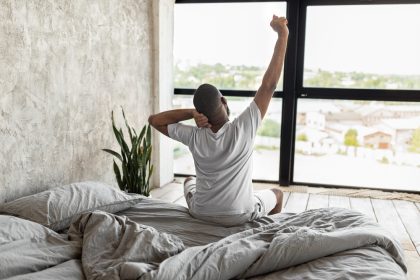For many Americans, homeownership represents a milestone of financial stability and long-term investment. Yet the true cost of owning a home extends far beyond the monthly mortgage payments, with numerous expenses that can catch new homeowners unprepared. Understanding these hidden costs is crucial for anyone considering the transition from renting to owning, particularly in today’s dynamic housing market.
Essential maintenance and repairs
The shift from renting to owning brings immediate responsibility for every aspect of property upkeep. Regular maintenance tasks accumulate significant costs over time, often surprising first-time homeowners with their frequency and expense. Professional services for these routine tasks can range from $150 to $500 per visit, quickly adding up throughout the year.
Common maintenance requirements include:
- Annual HVAC system servicing and filter replacements
- Gutter cleaning and roof inspections twice yearly
- Regular lawn care and seasonal landscaping
- Interior and exterior painting every 5-7 years
- Basic plumbing and electrical repairs
- Chimney cleaning and inspection
- Deck and fence maintenance
- Window cleaning and repair
These routine expenses can amount to $3,000 to $5,000 annually, requiring careful budgeting and planning. The age and condition of the home significantly impact these costs, with older homes typically demanding more attention and resources.
The evolving burden of property taxes
Property taxes present an ongoing expense that often increases over time. As neighborhood values rise, so do tax assessments, potentially straining fixed-income homeowners. Unlike mortgages, property taxes continue indefinitely and can rise unpredictably based on local market conditions and municipal needs. Many homeowners face annual increases of 2% to 6%, though some areas experience even steeper hikes during periods of rapid development or gentrification.
Insurance complexities and coverage gaps
Beyond basic protection
Standard homeowners insurance provides essential coverage, but many properties require additional protection. Basic policies typically cost between $800 and $1,500 annually, but supplemental coverage can double these amounts. Flood insurance alone often adds $700 to $1,000 to annual costs, while earthquake coverage in susceptible areas might add several thousand more.
Location plays a crucial role in insurance costs. Coastal properties face higher premiums due to storm risks, while urban areas might see increased rates due to crime statistics. Recent natural disasters in an area can trigger significant premium increases, sometimes as much as 25% to 40% in a single year.
Community costs and special assessments
Many neighborhoods, particularly newer developments, require homeowners association (HOA) membership. Monthly HOA fees typically range from $200 to $600, funding community maintenance and amenities. However, special assessments for major projects can impose substantial unplanned costs, sometimes reaching $10,000 or more per household for significant improvements like roof replacements or structural repairs.
Utility expenses in perspective
The price of comfort
Transitioning from an apartment to a house often means significantly higher utility costs. A typical single-family home might see monthly utility bills of $400 to $600, compared to $100 to $200 in an apartment. Heating and cooling larger spaces demands more energy, particularly in older homes with less efficient systems.
Seasonal temperature extremes can create dramatic swings in monthly expenses. Winter heating bills in colder regions might spike to $500 or more per month, while summer cooling costs in warmer areas can reach similar levels. Energy-efficient upgrades can help reduce these costs but require significant upfront investment, often $10,000 to $30,000 for comprehensive improvements.
Major structural investments
Every home eventually needs substantial repairs or replacements. These critical projects include:
- Roof replacement ($8,000 to $20,000)
- Foundation repairs ($2,000 to $15,000)
- Plumbing system updates ($1,500 to $15,000)
- Electrical system modernization ($3,000 to $12,000)
- HVAC system replacement ($5,000 to $10,000)
Such projects typically fall outside insurance coverage due to normal wear and tear, requiring homeowners to maintain substantial savings for these inevitable expenses.
Health and safety considerations
Older homes particularly may harbor health concerns requiring costly remediation. Professional mold removal can cost $2,000 to $6,000, while radon mitigation systems typically range from $800 to $1,500. Lead paint removal might cost $8,000 to $15,000 per project, making these safety improvements significant investments in both health and property value.
Environmental control
Managing unwanted visitors
Pest control represents an ongoing expense crucial for both comfort and structural integrity. While routine prevention might cost $300 to $500 annually, addressing serious infestations—particularly termites—can require $2,000 to $8,000 in treatment and repairs. Regular inspections and preventive treatments help avoid more costly interventions later.
The renovation reality
Home improvements, whether necessary or discretionary, frequently exceed initial budget estimates. Kitchen remodels typically range from $15,000 to $50,000, while bathroom renovations cost $10,000 to $30,000. Even seemingly minor updates can become major expenses when accounting for materials, fixtures, and professional installation.
Appliance lifecycle management
Major appliances require periodic replacement, with lifespans typically ranging from 10 to 20 years. Building a replacement fund helps manage these predictable but substantial expenses:
- Water heaters: $800 to $1,500
- Refrigerators: $1,000 to $3,000
- Ovens and ranges: $650 to $2,000
- Washers and dryers: $700 to $2,000
- Dishwashers: $400 to $1,000
The path to successful homeownership requires understanding and preparing for these hidden costs. While the mortgage payment remains constant, these additional expenses demand flexible budgeting and careful financial planning. Prospective buyers who account for these often-overlooked costs can better maintain their investment while avoiding financial stress.
Establishing a comprehensive budget that includes both predictable and unexpected expenses helps transform homeownership from a potential financial burden into a sustainable, rewarding investment. Financial experts recommend setting aside 1% to 4% of a home’s purchase price annually for maintenance and repairs, creating a buffer against these hidden costs.
This story was created using AI technology.











